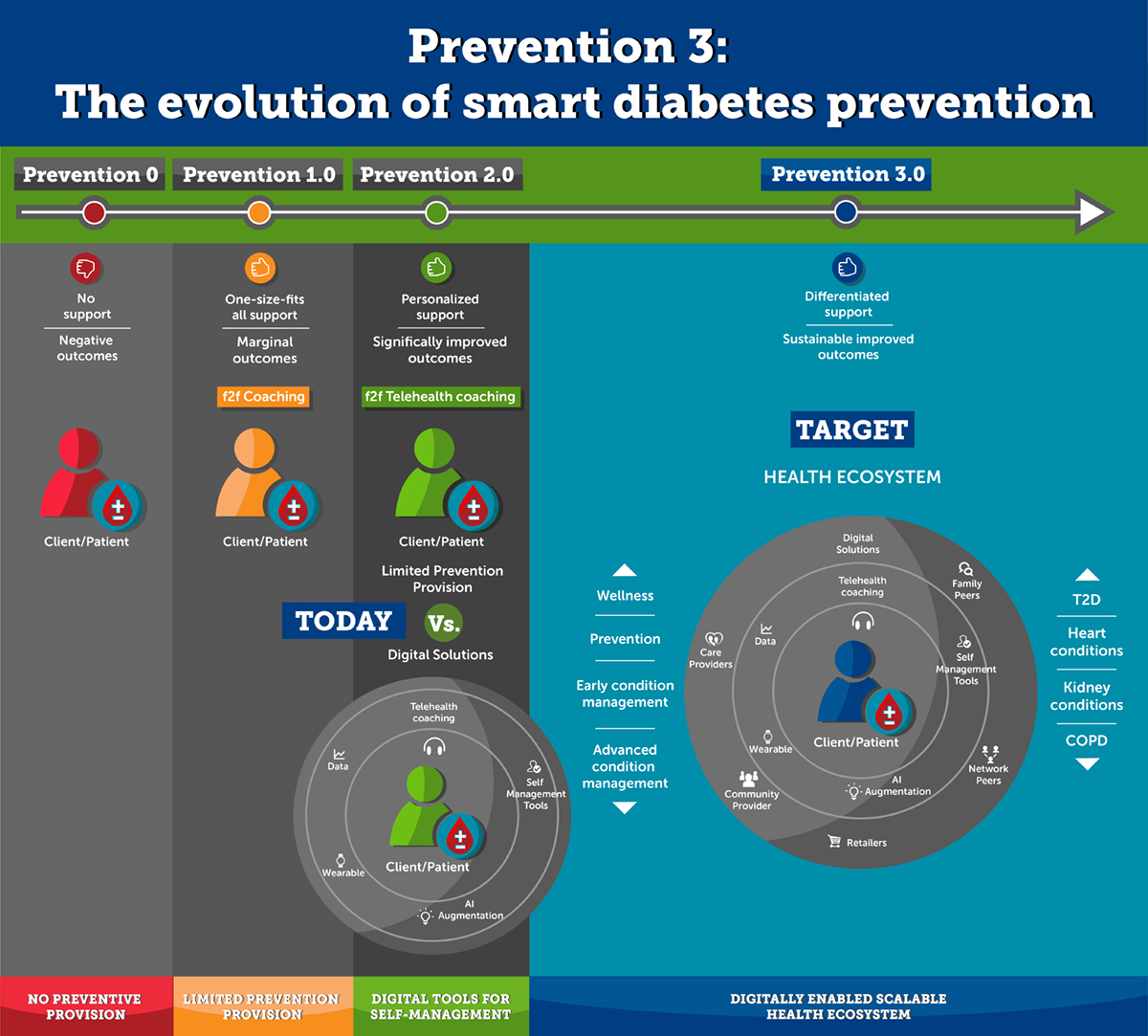Hitachi Consulting sheds light on how they digitally enable type 2 diabetes prevention models
Recent reports by the World Health Organization (WHO) identifies that 422 million adults have diabetes and the disease causes over 1.6 million deaths per year. The number of people with type 2 diabetes (T2D) has nearly quadrupled since 1980 and prevalence is increasing in low- and middle-income groups. At an individual level, T2D greatly impacts the quality of life and bears a significant risk of complications and comorbidities.
“The cost of diabetes to the NHS is over £1.5 million an hour or 10% of the NHS budget for England and Wales. In total, an estimated £14 billion pounds is spent a year on treating diabetes and its complications, with the cost of treating complications representing the much higher cost.” (reference: diabetes.co.uk, 2012).
At a societal and economic level, the prevalence and growth of diabetes present one of the most significant healthcare challenges of modern times.
Further escalation of the growing cost to society is unsustainable!
Why prevention?
Traditionally, healthcare systems have developed to treat illness. Policy, budgets, commissioning and service innovation have been primarily focused on this objective. However, with increasing life expectancy, the incidence of chronic diseases, such as diabetes are increasing, typically consuming 70% of healthcare expenditure, which is not sustainable.
“90% of all T2D could be avoided with lifestyle change.” (WHO).
Prevention provides an evidenced and effective means of intervention for those at risk of T2D. Questions are often raised about the scalability of prevention programmes and evidence supporting the sustainability of outcomes – but it can be argued these should not be used to dismiss prevention but guide the evolution of the future approach to prevention.
A holistic and effective prevention strategy is required to stem the growth of diabetes prevalence!
Why smart?
Will 10,000 steps a day help me live to 101? Invariably not. Prevention is not wellness, it is far more complex, and we need a smart approach in shaping prevention to help at-risk individuals and societal challenges. So, what are the key aspects of a smart approach?
1 – Personalisation
The causes of T2D are complex. While a lack of physical exercise, increases in weight and obesity are common traits – diet choice, socio-economic determinants and personal circumstance are far more complex and need to be considered to deliver effective, appropriate, safe and sustainable lifestyle change. Prevention pathways should, therefore, be both clinically and insight-led while providing personal and tailored guidance relevant to an individual’s needs to help people achieve food and activity goals related to an underlying change in their daily behaviour.
2 – Cost-effectiveness
The ability to deliver public health interventions at an acceptable cost across a range of priorities has always been both a challenge and constraint. To be viable at scale, we must design prevention solutions that can be delivered cost-effectively, yet also ensure they are reliable and sustainable outcomes for the target population. To date, prevention programmes have struggled to provide strong evidence on the sustainability of outcomes.
3 – Scalability
The prevalence and nature of T2D require an approach that can be delivered at scale to reach people in low/middle-income areas. To scale effectively, prevention must deal with a broad cohort – from children to the elderly – the rich and poor – those who are digitally active and those with low IT literacy and every ethnicity. Applying digital capabilities can make a significant impact!
Why digital?
1 – Remote engagement
Delivering cost-effective public health interventions across both geographically dispersed and demographically diverse healthcare economies continues to pose a challenge for scalability. To scale effectively, prevention interventions must leverage digital technologies – from point solutions to the Internet of Things (IoT) devices and wearables. Digital solutions enable remote engagement providing a scalable vehicle driving patient activation, service personalisation and differentiation, allowing citizens to self-manage more effectively, with improved outcomes.
2 – Dynamic pathways
Existing T2D prevention interventions tend to adopt a one-size-fits-all pathway model. Aside from failing to provide cost-effectiveness at scale, this inhibits pathways from being dynamically adapted to citizen needs and behaviour. To provide the best outcomes for citizens and cost-effectiveness at scale, prevention interventions must adopt a dynamic pathway model, with citizen needs at the forefront. Digital solutions provide data-driven insights that need to enable real-time pathway flexibility based on citizen engagement, outcomes and progress and allowing the right support to be provided.
3 – Workforce Optimisation
One-size-fits-all pathway models tend to drive declining workforce productivity, undercutting both cost-effectiveness and the scalability of prevention interventions. To scale effectively, prevention interventions must leverage data-driven insights so that clinical support is targeted in the right way, at the right time. Digital solutions provide an effective mechanism for data-driven insights to enable dynamic workforce design and management, targeting citizen need at key ‘turning points’ of the pathway. Digital is a critical enabler for smart prevention!
A journey to prevention 3.0
Many healthcare providers and insurers have embarked on a journey to prevention by developing individual and group therapeutic approaches to lifestyle change. While partially effective, these approaches often fail to fully take advantage of technology and data to sustain positive lifestyle outcomes.
Hitachi Smart Digital Diabetes Prevention leverages digital technologies to provide a scalable and personalised telehealth offering that enhances sustainable lifestyle goals. Hitachi’s vision of ‘Prevention 3.0’ is centred around data-driven insights, wearable technologies and remote artificial intelligence (AI)-augmented human coaching, co-existing in harmony with the wider health ecosystem.
Please note: this is a commercial profile
Hitachi Consulting
Tel: +44 (0)20 7842 7800












